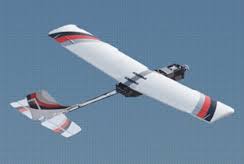The FAA has begun a series of test flights in North Carolina today, to help determine the FAA policy on commercial drone use. The test flights are being performed by drone software experts Precision Hawk, and are designed to demonstrate a drone’s ability to operate safely outside of the operator’s line of sight.
As US companies such as Amazon and Google race to develop technology for commercial uses of drones for applications from farming to delivery services, these applications rely upon the FAA’s agreement that drones may operate outside of the pilot’s line of sight. This represents a change from current regulations for commercial drones weighing less than 55 pounds, specifically prohibiting drone operation out of a pilot’s line of sight.
Precision Hawk is one of the four companies designated as part of the FAA’s Pathfinder program, designed to bring industry and government together to develop drone technologies. Precision Hawk’s LATAS (Low Altitude Tracking and Avoidance System) which DroneLife reported on last month, is one such air traffic control technology that offers an alternative to strict operator regulations.
The trials will test a number of safety issues. They will compare the ability of a drone totally under the control of it’s operator to avoid an obstacle, specifically an aircraft, with the ability of a drone outside of the operator’s line of site but equipped with the LATAS technology to avoid the same obstacle.
“We want to measure the ability of a person flying the drone looking for airspace hazards visually against letting the drone make some decisions,” Tyler Collins, who leads work on LATAS at Precision Hawk, told MIT’s Technology Review. “We hope to show the FAA that as we introduce this technology it allows us to create a safer airspace.”
Industry will be watching the trials carefully. While other countries such as France already allow for operation outside of line of sight in low risk areas, the US has taken a firm stance on the regulation of commercial applications, refusing to allow long-range flying.
Miriam McNabb is the Editor-in-Chief of DRONELIFE and CEO of JobForDrones, a professional drone services marketplace, and a fascinated observer of the emerging drone industry and the regulatory environment for drones. Miriam has penned over 3,000 articles focused on the commercial drone space and is an international speaker and recognized figure in the industry. Miriam has a degree from the University of Chicago and over 20 years of experience in high tech sales and marketing for new technologies.
For drone industry consulting or writing, Email Miriam.
TWITTER:@spaldingbarker
Subscribe to DroneLife here.
